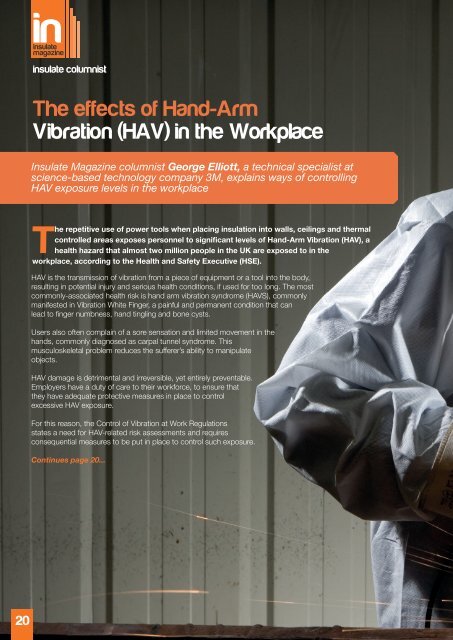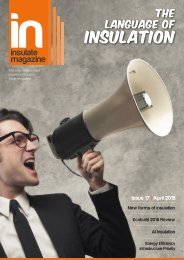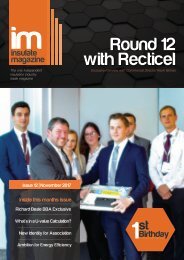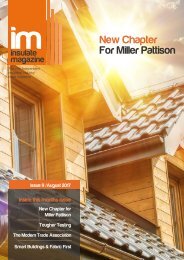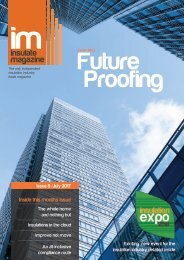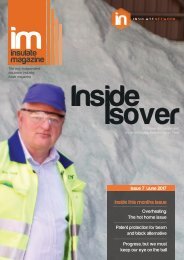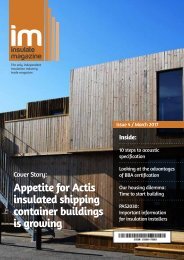Insulate Magazine Issue 13
Create successful ePaper yourself
Turn your PDF publications into a flip-book with our unique Google optimized e-Paper software.
insulate columnist<br />
The effects of Hand-Arm<br />
Vibration (HAV) in the Workplace<br />
<strong>Insulate</strong> <strong>Magazine</strong> columnist George Elliott, a technical specialist at<br />
science-based technology company 3M, explains ways of controlling<br />
HAV exposure levels in the workplace<br />
The repetitive use of power tools when placing insulation into walls, ceilings and thermal<br />
controlled areas exposes personnel to significant levels of Hand-Arm Vibration (HAV), a<br />
health hazard that almost two million people in the UK are exposed to in the<br />
workplace, according to the Health and Safety Executive (HSE).<br />
HAV is the transmission of vibration from a piece of equipment or a tool into the body,<br />
resulting in potential injury and serious health conditions, if used for too long. The most<br />
commonly-associated health risk is hand arm vibration syndrome (HAVS), commonly<br />
manifested in Vibration White Finger, a painful and permanent condition that can<br />
lead to finger numbness, hand tingling and bone cysts.<br />
Users also often complain of a sore sensation and limited movement in the<br />
hands, commonly diagnosed as carpal tunnel syndrome. This<br />
musculoskeletal problem reduces the sufferer’s ability to manipulate<br />
objects.<br />
HAV damage is detrimental and irreversible, yet entirely preventable.<br />
Employers have a duty of care to their workforce, to ensure that<br />
they have adequate protective measures in place to control<br />
excessive HAV exposure.<br />
For this reason, the Control of Vibration at Work Regulations<br />
states a need for HAV-related risk assessments and requires<br />
consequential measures to be put in place to control such exposure.<br />
Continues page 20...<br />
20


